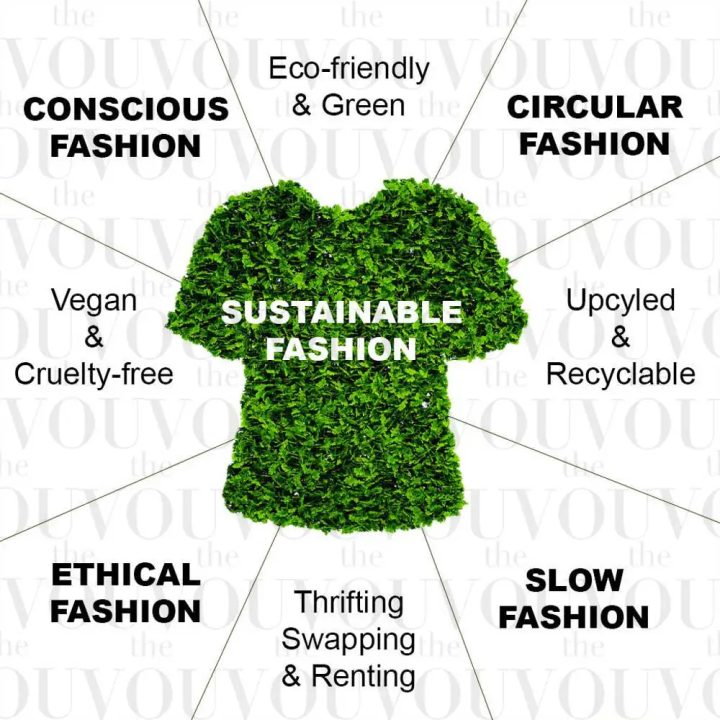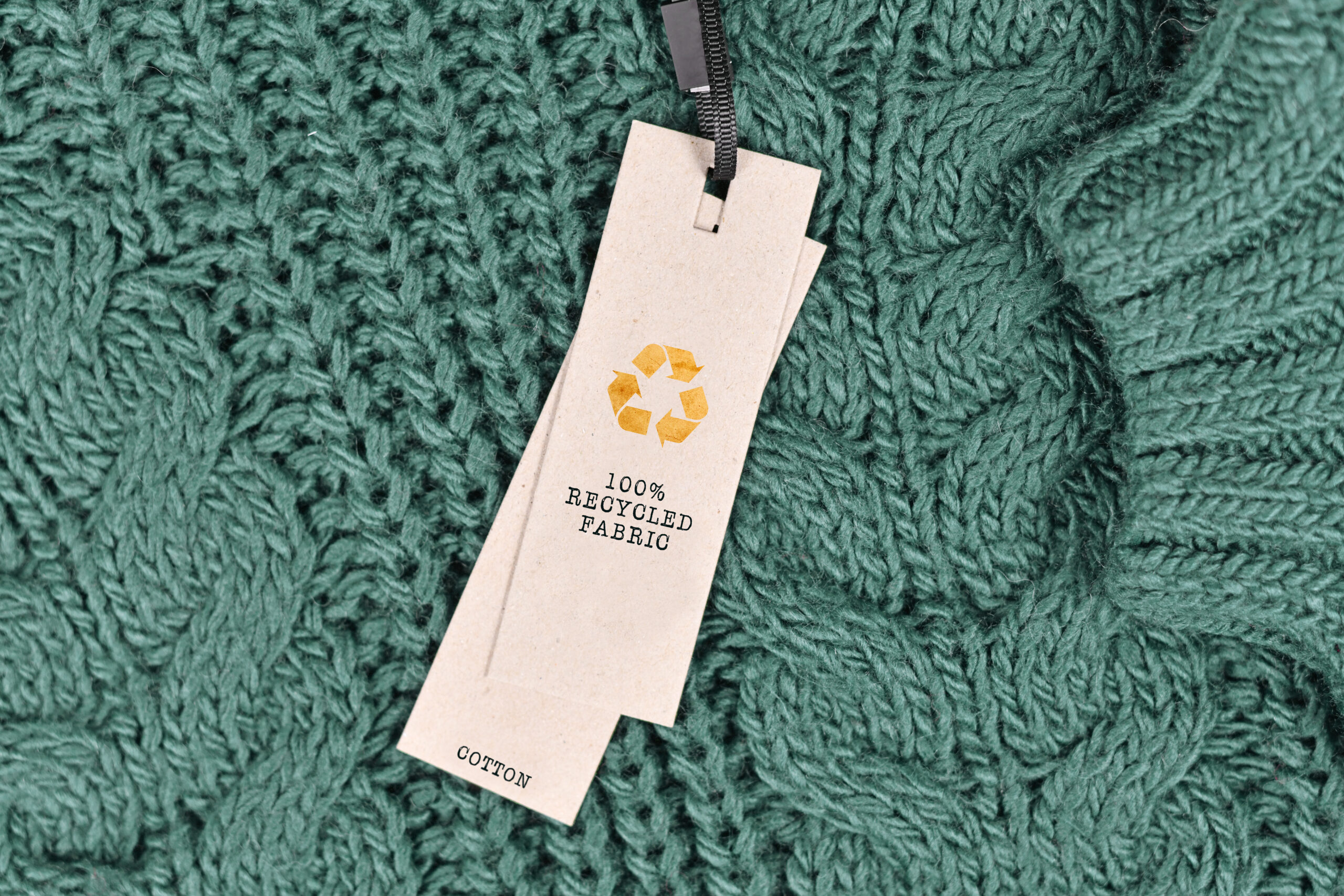Cape Town Sustainable Fashion: Eco-Friendly Trends to View
Cape Town Sustainable Fashion: Eco-Friendly Trends to View
Blog Article
Keep Ahead of the Curve by Exploring Ingenious Fashion Patterns
In a market as dynamic as style, staying ahead includes greater than simply adhering to present fads-- it demands an exploration of innovation. Smart textiles, for example, are changing garments right into practical masterpieces, while 3D printing is reinventing design procedures with its customizable, waste-reducing abilities. As sustainability ends up being a keystone, advancements like environmentally friendly materials and round fashion techniques are improving environmental responsibility - Cape Town Sustainable Fashion. In addition, the merging of innovation and style declares a brand-new era of consumer engagement. Exactly how, then, can these arising patterns redefine the future of fashion, and what effects do they hold for brands looking for to thrive in this evolving landscape?

Accepting Smart Textiles
Recently, the fashion market has actually seen a transformative shift with the integration of clever textiles, a cutting-edge technology that mixes technology with fabric. This evolution represents not just a fusion of aesthetics and performance yet additionally a significant leap in the direction of sustainability and customization in style. Smart fabrics, additionally known as e-textiles, embed advanced electronics such as sensing units and conductive threads within the material, making it possible for garments to interact with the user or the atmosphere.
These fabrics are created to keep track of physical specifications, such as heart rate or body temperature, offering real-time health and wellness analytics. Past health applications, smart fabrics are likewise being used for flexible clothes, which can change color or pattern in response to environmental stimuli, thus using a dynamic fashion experience.
Furthermore, the development of energy-harvesting textiles that create power from activity or sunlight is leading the way for self-dependent wearable modern technology. This development is appealing to eco mindful customers and designers intending to minimize the ecological impact of fashion. As r & d in this area breakthrough, smart textiles are expected to become significantly common, improving the landscape of modern-day fashion with their multifunctional capacities.
The Rise of 3D Printing
Revolutionizing the manufacturing landscape, 3D printing has become a game-changer in the fashion business. This sophisticated technology has enabled developers to push the limits of imagination, creating complex and customized garments that were formerly unimaginable. By leveraging digital style and additive production, 3D printing helps with the development of complex geometries and patterns, enabling developers to explore brand-new structures and structures.
A remarkable advantage of 3D printing in vogue is its ability to produce on-demand, decreasing waste and minimizing stock demands. This effectiveness not only maximizes production processes but also enables rapid prototyping, making it possible for developers to bring their visions to life in a much shorter timeframe. Furthermore, 3D printing sustains modification somewhat unparalleled by typical techniques, offering customized fits and distinct layouts tailored to specific consumer choices.
The increase of 3D printing has likewise equalized fashion, making it available to arising developers who can currently fabricate top notch items without considerable monetary investment in traditional production facilities. As innovation remains to development, the style sector is poised to harness the complete potential of 3D printing, checking out brand-new products and methods that will unquestionably redefine exactly how fashion is developed and generated.
Lasting Style Developments
As the garment industry faces the pushing requirement for environmental obligation, sustainable style innovations have actually emerged at the center my site of transformative adjustment. The growing awareness of environmental influence has actually sustained a change in the direction of even more eco-conscious practices and products. Developers and brand names are now focusing on sustainability, incorporating techniques that reduce waste and minimize carbon impacts.
One considerable development is the surge of round fashion, which stresses recycling and upcycling to expand the lifecycle of garments. This click to investigate strategy not just minimizes waste however also motivates customers to adopt a much more mindful technique to garments intake.
Another breakthrough exists in the fostering of innovative dyeing methods that use waterless procedures or all-natural dyes, therefore lowering the huge amounts of water and chemicals generally utilized in textile dyeing. Additionally, developments in biotechnology have brought about the creation of lab-grown natural leather and fabrics, offering ecologically friendly and cruelty-free options to conventional materials. With these pioneering efforts, the apparel industry is making significant strides towards a much more sustainable future.

Tech-Integrated Garments
Tech-integrated clothing stands for a revolutionary fusion of fashion and innovation, improving just how individuals communicate with their clothing. This ingenious domain name is noted by the addition of wise textiles and ingrained electronic parts, improving both performance and visual appeal. From health and fitness trackers embedded in sports apparel to warmed jackets controlled via mobile phone applications, tech-integrated apparel provides consumers extraordinary ease and flexibility.
Pioneering brands are driving this trend, focusing on developing garments that respond to environmental stimulations or user commands. For circumstances, some garments can alter color or pattern in feedback to temperature shifts, while others integrate biometric sensors to check wellness metrics like heart price or stress levels. The seamless integration of innovation right into fabrics also includes ecological sustainability, with initiatives to create self-cleaning materials or garments that readjust to climate condition, hence lessening the demand for multiple layers.
Furthermore, the advent of wearable innovation is not simply limited to clothing yet encompasses devices like watches and glasses, more expanding the scope read of tech-integrated style. As the market remains to innovate, the possibility for modification and customization in clothing expands, using customers distinct, tech-enhanced style experiences that deal with their individual needs and preferences.
Future of Virtual Style
In recent years, the future of digital fashion has emerged as a transformative pressure within the sector, leveraging improvements in electronic modern technology to redefine how fashion is produced, experienced, and taken in. By integrating increased truth (AR), online reality (VR), and 3D design tools, designers can now craft immersive and interactive experiences that transcend conventional style boundaries. Virtual style permits for the development of garments that exist solely in electronic settings, supplying endless opportunities for advancement without the constraints of physical manufacturing.
This digital change not just presents opportunities for creative expression however also addresses sustainability concerns intrinsic in typical fashion methods. Cape Town Sustainable Fashion. By getting rid of the need for physical sources, online fashion lowers waste and decreases carbon impacts. Additionally, the surge of virtual style aligns with the enhancing consumer demand for tailored and one-of-a-kind experiences, as digital garments can be personalized and tailored to individual preferences effortlessly

Verdict
The style sector's future lies in the integration of cutting-edge innovations and lasting practices. Online fashion is positioned to redefine consumer communications.
In recent years, the style market has actually witnessed a transformative change with the combination of smart textiles, a cutting-edge development that blends modern technology with fabric.As the fashion industry grapples with the pressing requirement for environmental obligation, lasting style advancements have actually arised at the center of transformative modification.In current years, the future of digital style has arised as a transformative force within the market, leveraging innovations in electronic innovation to redefine exactly how fashion is produced, experienced, and eaten. The surge of virtual style straightens with the increasing consumer demand for individualized and special experiences, as virtual garments can be tailored and customized to private preferences with convenience.
The fashion sector's future lies in the integration of lasting techniques and cutting-edge modern technologies.
Report this page